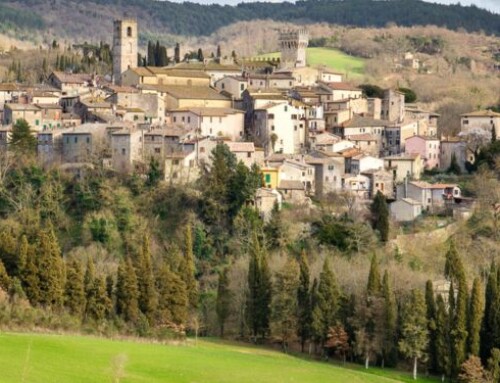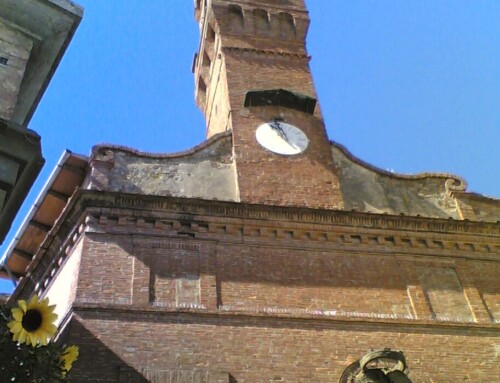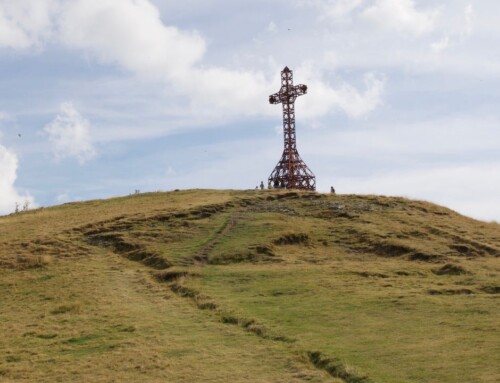The Piazza Grande in Arezzo: history and points of interest
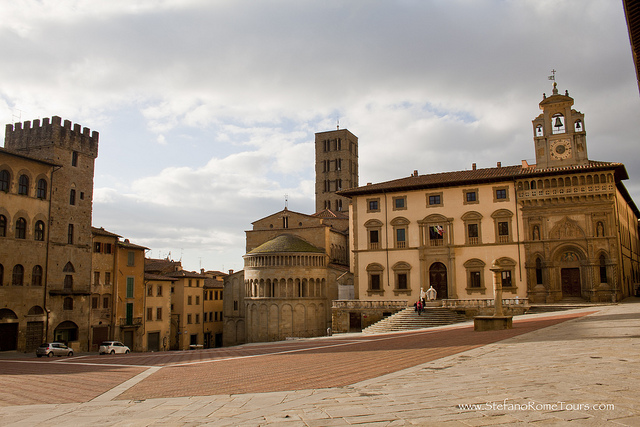
Piazza Vasari, also known as the Piazza Grande, is a hidden jewel of Arezzo, rich in history and beauty. A vital center since Roman times, today it is famous for the Giostra del Saracino, an ancient re-enactment that enlivens the square twice a year. Among its monuments are the Romanesque apse of the Pieve di Santa Maria, the baroque-style Palazzo del Tribunale, and the Palazzo delle Logge, a masterpiece by Giorgio Vasari. Piazza Vasari is also the site of the monthly Antiques Fair, one of the most important antiques markets in Europe, making Arezzo a must-see destination for art and history enthusiasts.
The Piazza Grande: Arezzo, history of an Italian art treasure
I bet when you think of Tuscany, the first cities that come to mind are Florence, with its monuments and architectural beauty; Siena, with its famous Palio; and Pisa, with its highly photographed tower. Probably the thought does not immediately go to one of the most characteristic and authentic cities, Arezzo, which contains in itself a real jewel of history and beauty, the Piazza Grande, also known as Piazza Vasari.
If you think that this might be a “minor” city, you should absolutely recreate yourself: you only need to know that it was the cradle of thirteenth-century Italian poetry, because it was the birthplace of poets such as Guittone d’Arezzo and Francesco Petrarch, the piquant Pietro Aretino, a great artist and architect such as Giorgio Vasari, a man who has remained in history, Maecenas, and the inventor of the musical scale that has come down to us, Guido d’Arezzo.
If you love cinema, you surely already know that the beautiful city immortalized in the film “Life is Beautiful” is indeed Arezzo and the set of so many scenes is precisely the Piazza Grande .
Situated in the heart of the city, this is surely one of the most beautiful squares in Tuscany. The Piazza Grande history has its roots in Roman times: it stands, in fact, in the same place where the Roman forum once existed. During the communal period, this same place was the scene of mercantile exchanges, religious and military life, and in the Renaissance period it was confirmed as the heart of the city’s civic life.
The Piazza Grande: The Joust of the Saracen
In reality, however, this square is mostly remembered for the Joust of the Saracen that took place here in medieval times and is still held to reenact the city’s medieval past. Today the Joust is held twice a year, in June and September: a competition between knights and a historical procession with three hundred figures and flag-wavers enliven the square and revive with vibrant passion a past of which the people of Arezzo are proud.
The Joust is held on the penultimate Saturday of June (it takes the name Giostra di San Donato) and the first Sunday in September (Giostra di Settembre). Few people know that the protagonists are the four ancient quarters of the city: Porta Crucifera, Porta del Foro, Porta Sant’Andrea and Porta del Borgo, or Porta Santo Spirito.
If you visit Piazza Vasari, you will be immediately struck by its completely irregular but nevertheless harmonious shape. A really special aspect is the inclination of the ground, which you cannot have found in any other square: as many as ten meters between the highest and the lowest point.
It’s true, walking here may be a bit tiring, but this inclination only characterizes the space and makes it unique, without detracting from its artistic beauty: in fact, a mere glance at this space gives you a real roundup of an anthology of artistic and architectural styles that will take your breath away.
On the western side of the square triumph the Romanesque style of the apse of the Pieve di Santa Maria, one of Arezzo’s most important churches since the 13th century, and the Baroque style of the Palazzo del Tribunale. On the same side you will also find the palazzo della Fraternità dei Laici, built in 1262 by the Dominican fathers, which encloses on its three levels Gothic, Renaissance and late Renaissance styles. On the north side you will see the famous Palazzo delle Logge, designed in 1573 by Giorgio Vasari: this is precisely why the square was named after him, and this is the place most immortalized in Benigni’s masterpiece.
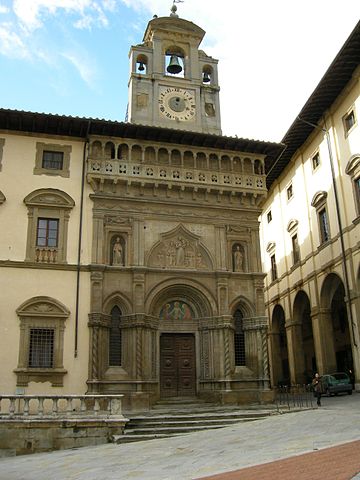
The Piazza Grande: Palace of the Fraternity of the Laici
On the east side, however, closes the square Palazzo Lappoli, restored in the Fascist era, while on the southwest side stands the tower-house of the Cofani family. The square is also overlooked by the bell tower with its 16th-century clock that chimes the lunar and solar phases.
In short, whether you are an enthusiast or not, you will not be able to remain indifferent to what is to all intents and purposes an open-air museum. Vasari Square: Arezzo history, art, beauty and enchantment meet here every day.
Do you want one more reason to visit Vasari Square? Perhaps you don’t know that today this square is home to the monthly Antiquaria fair, one of the most important in Europe, established in 1968 on the initiative of Ivan Bruschi. The fair is a very important meeting occasion for many enthusiasts who meet here to exchange watches, prints, books, fabrics, etc… in short, it is an unmissable opportunity to meet new people and make some good deals.
Book your vacation near Arezzo now.
Photo credits:
- The Piazza Grande Arezzo, Tuscany (Italy) => Stefano Costantini
- The Piazza Grande, Palace of the Fraternita dei Laici => Wikipedia[:]



